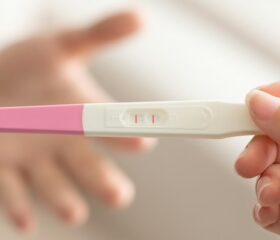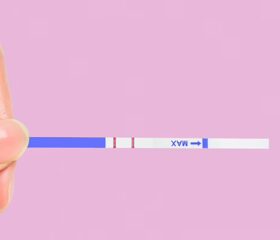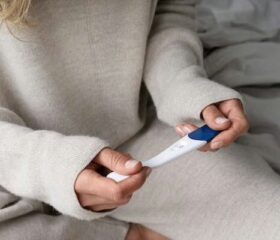Do Ovulation Tests Work, and How Accurate Are They?
When trying to figure out what your most fertile days of the month are, you might have considered using an ovulation test. Just how accurate are these devices?
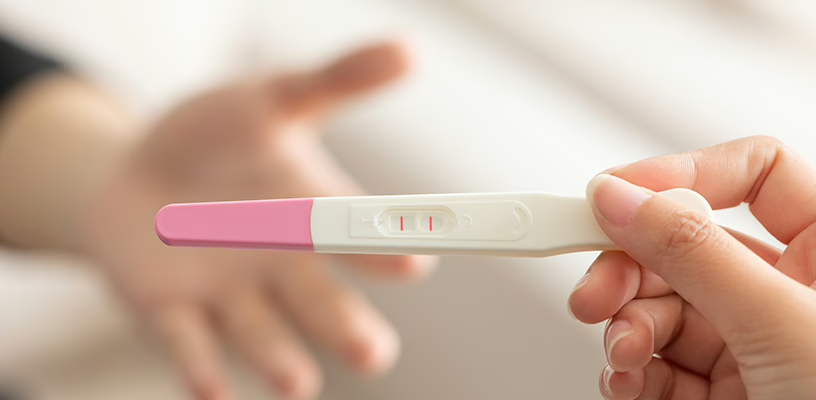
- What exactly are ovulation predictor kits?
- How accurate are ovulation tests?
- How using your test incorrectly can give you inaccurate results
- Other factors that can cause inaccurate ovulation test results
- How to maximize the accuracy of your ovulation test
- How else can you track your ovulation?
- What should you do if you always get negative results on ovulation tests?
- Final thoughts
During ovulation, an egg is only viable for a short window (typically less than 24 hours after it’s released from your ovaries). If you’re trying to get pregnant, pinpointing exactly when you’re ovulating is important.
Using an ovulation test, also known as an ovulation predictor kit (OPK), is a good way to figure out your fertile period, but they’re not perfect.
We’ll walk you through what exactly OPKs are and how they work, how accurate they typically are, and how to get the most reliable results with your test.
What exactly are ovulation predictor kits?
Ovulation predictor kits (OPKs) are at-home tests that analyze your urine to detect the hormonal changes associated with ovulation.
Specifically, these tests look for a hormone called luteinizing hormone (LH). As you approach ovulation (near the middle of your monthly menstrual cycle), your body begins producing LH, some of which accumulates in your urine.
Between 16 and 48 hours before ovulation, your LH levels surge. This tells one of your ovaries to release a mature egg into your fallopian tube. 1
A positive result on an OPK indicates that your LH levels are high and you’ll probably ovulate within the next day or two. If you’re trying for a baby, you can use this information to plan the best time to have sex. Your chances of getting pregnant after a positive ovulation test result are usually quite good.
How to use an ovulation test
To use an ovulation test, you’ll usually need to either dip your test strip into a sample of your urine or hold the test strip in your urine stream, then wait a few minutes for the result.
Ovulation test strips usually have two lines: a test line and a control line. If you get a positive result on your ovulation test, the testing line will be darker than the control line.
If your test is negative (either indicating that ovulation is over or that it’s still far off), the line will be lighter or not visible at all. Some tests, known as digital tests, may also use another type of symbol, such as a smiley face; review the instructions that came with your test to be sure how to read it.
When should you use an ovulation test?
Timing is key with ovulation tests. If your menstrual cycles are pretty consistent, you should start testing a few days before you expect to ovulate.
Most women ovulate between 12 and 14 days before their next period. 2 If you have a 28-day cycle, you’ll probably ovulate around day 14, meaning you should start testing around day 11. 3 You can use an online ovulation calculator or a fertility tracker app to map out your cycle and figure out when you should start testing.
Tracking ovulation with irregular periods is a little trickier. You’ll probably need to test multiple times over the course of several cycles to get an idea of when you usually ovulate. If you have trouble, you may need to speak with a fertility specialist to get personalized guidance, especially if you’re trying to get pregnant with irregular periods. 2
How accurate are ovulation tests?
The good news is that modern OPKs are generally very accurate. According to the US Food and Drug Administration (FDA), when you use them correctly, they’re about 90% effective in detecting an LH surge. 4
With that said, bodies can be unpredictable. If your individual LH surge is unusually low (below the test’s sensitivity) or very short, you might miss it or get a false negative when you test. In the same vein, some women may have higher baseline LH levels that could be misread. 5
That isn’t really the fault of ovulation tests. It’s important to remember that they check for the LH surge that usually accompanies ovulation, but not for ovulation itself. If your menstrual cycle does something unusual, that could cause the test to return misleading results.
How using your test incorrectly can give you inaccurate results
As mentioned, OPKs are generally very accurate when used correctly, but the key phrase there is when used correctly. The biggest factor for your ovulation test’s accuracy is how you use it.
You may also get an incorrect result if you: 6
- Collect your urine sample incorrectly: You could get a false negative result if you don’t get enough urine on the test stick.
- Dilute your urine too much: If you drink too much water (or other fluids) before taking the test, the LH in your urine could become too diluted to show up on the test.
- Use an expired test: Ovulation tests have expiration dates. If you use an old, expired kit, it may no longer be able to accurately detect the LH in your pee.
Other factors that can cause inaccurate ovulation test results
While human error is usually the main cause of inaccurate results, you can also get them due to factors such as:
Medication
Certain medications can interfere with OPK results, such as:
- Those used in hormone replacement therapy (HRT)
- Antibiotics containing tetracyclines
- Danazol
Some fertility drugs, especially those containing human chorionic gonadotropin (hCG), clomiphene citrate, and menotropins, may also skew your results. 6
Furthermore, hormonal contraceptives (like the pill) disrupt your normal menstrual cycle and may inhibit ovulation altogether. If you’re on hormonal birth control, you’ll get a negative result on your test for the simple reason that you’re not ovulating (or fertile).
Medical conditions
Certain medical conditions can also make ovulation tests less accurate.
For example, women with polycystic ovary syndrome (PCOS) may have mildly elevated LH levels throughout their cycles. As a result, PCOS makes it tricky to track when you’re ovulating. 7
In rare cases, a condition known as luteinized unruptured follicle syndrome (LUFS) can also cause an LH surge as normal, but your ovaries won’t actually release a mature egg. 8 This is a case where your ovulation test will still do its job correctly (by testing accurately for the presence of LH), but the result will be misleading since you aren’t actually fertile when you get a positive test. 9
Pregnancy or perimenopause
The hormone hCG, often called the “pregnancy hormone,” has a similar molecular structure to LH, and OPKs can mistake hCG for LH. As a result, your ovulation test may be positive if you’re pregnant or were recently pregnant. 10
Moreover, women approaching menopause often have higher baseline levels of LH. This can cause misleading results on their tests. 6
How to maximize the accuracy of your ovulation test
As you’re probably gathering, to get reliable results from your OPKs, the most important thing is to use them correctly.
Every OPK brand is slightly different, so always read and follow your test’s instructions. Try to test at the same time each day. Many women find that testing first thing in the morning is best, but most kits can be used at any time of the day. 6
You should also avoid drinking large amounts of liquid for a couple of hours before testing, as this can dilute your urine and potentially lead to a false negative. When you collect your urine, do so according to your test’s instructions.
Lastly, be sure not to read the test results too early or too late. Wait as long as the instructions say to check the results, but no longer.
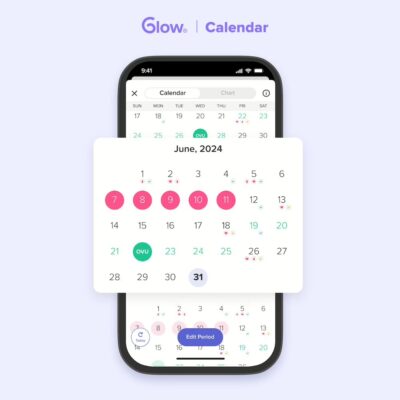
How else can you track your ovulation?
Although ovulation tests are generally quite accurate, if you want to get a better handle on your cycle, it’s worth using them alongside other ovulation-tracking methods.
For instance, you can try:
Using fertility monitors
These are digital devices that, in addition to checking for LH in your urine (like OPKs), also analyze electrolytes in your saliva and track your basal body temperature (BBT). They can store your ovulation data over multiple cycles. 3
Tracking your symptoms
Many women also experience ovulation symptoms. Keeping an eye out for these could give you clues as to when you’re ovulating.
The symptoms you should watch out for include: 11
- Cervical mucus (ovulation discharge): Watch for changes in the consistency of your cervical mucus (around ovulation, it typically becomes clear and stretchy, with many women claiming their discharge resembles raw egg whites).
- Ovulation pain (mittelschmerz): Many women experience pain or cramping in one side of the abdomen or pelvic region, which coincides with the ovary on that side releasing a mature egg. 12 Note that despite certain folk beliefs, while mittelschmerz does indicate you’re entering your fertile window, there’s no link between having ovulation pain and your chances of successfully getting pregnant.
- Increased libido: You might find that you feel friskier around the time you’re ovulating due to your surging hormones. Think of it as nature’s way of telling you to go and make a baby.
- Bloating: Many women also report having gas and bloating around the time they ovulate. However, like many other symptoms, bloating could be the result of something unrelated to ovulation.
Keep in mind that not all women experience these ovulation symptoms, so tracking them isn’t a perfect method.
Tracking your basal body temperature
Your basal body temperature (BBT) is your body’s resting temperature, which you can measure first thing each morning with a special basal thermometer (one that measures to two decimal points). Many women track their BBT to find out when they’re ovulating. Proponents of this method claim that a woman’s BBT rises slightly around the time she ovulates.
However, the scientific evidence for this method is fairly weak, and most experts state that tracking your BBT alone isn’t a reliable way of determining when you’re ovulating. You can do it, but it’s best not to put too much stock in the results.
What should you do if you always get negative results on ovulation tests?
Speak with your doctor or a fertility specialist if you’ve been using ovulation tests correctly for several months and are consistently getting negative results, or if:
- You have a highly irregular cycle
- You suspect you might have an underlying condition like PCOS
- You’ve been actively trying to conceive for over a year (or six months if you are over 35) without success
Your doctor can look into whether you have a medical condition that’s affecting your fertility and help you figure out how to get pregnant if you’re struggling to find your fertile window.
Final thoughts
In general, ovulation tests are highly accurate, with the caveat that you need to use them correctly. If you’ve been using OPKs for a few months and you still have questions or concerns about your fertility, your doctor is always the best person to go to.
Article Sources
- ColumbiaDoctors. "Find Your Ovulation Day" Retrieved June 24, 2025.
- Johns Hopkins Medicine. "Calculating Your Monthly Fertility Window" Retrieved June 24, 2025.
- MedlinePlus. "Ovulation home test" Retrieved June 24, 2025.
- U.S. Food & Drug Administration. "Ovulation (Urine Test)" Retrieved June 24, 2025.
- Frontiers in Public Health. "Urinary Luteinizing Hormone Tests: Which Concentration Threshold Best Predicts Ovulation?" Retrieved June 24, 2025.
- American Pregnancy Association. "How to Use Ovulation Kits & Fertility Monitors" Retrieved June 24, 2025.
- Cleveland Clinic. "Luteinizing Hormone" Retrieved June 24, 2025.
- Natural Womanhood. "Luteinized Unruptured Follicle (LUF): An explanation for ‘unexplained infertility’" Retrieved June 24, 2025.
- Journal of Obstetrics and Gynaecology. "Luteinised unruptured follicle syndrome: pathophysiological background and new target therapy in assisted reproductive treatments" Retrieved June 24, 2025.
- U.S. Food & Drug Administration. "Guidance for Over-the-Counter (OTC) Human Chorionic Gonadotropin (hCG) 510(k)s - Guidance for Industry and FDA Reviewers/Staff" Retrieved June 24, 2025.
- American Pregnancy Association. "Ovulation Symptoms – Am I Ovulating?" Retrieved June 24, 2025.
- Cleveland Clinic. "Ovulation Pain" Retrieved June 24, 2025.


